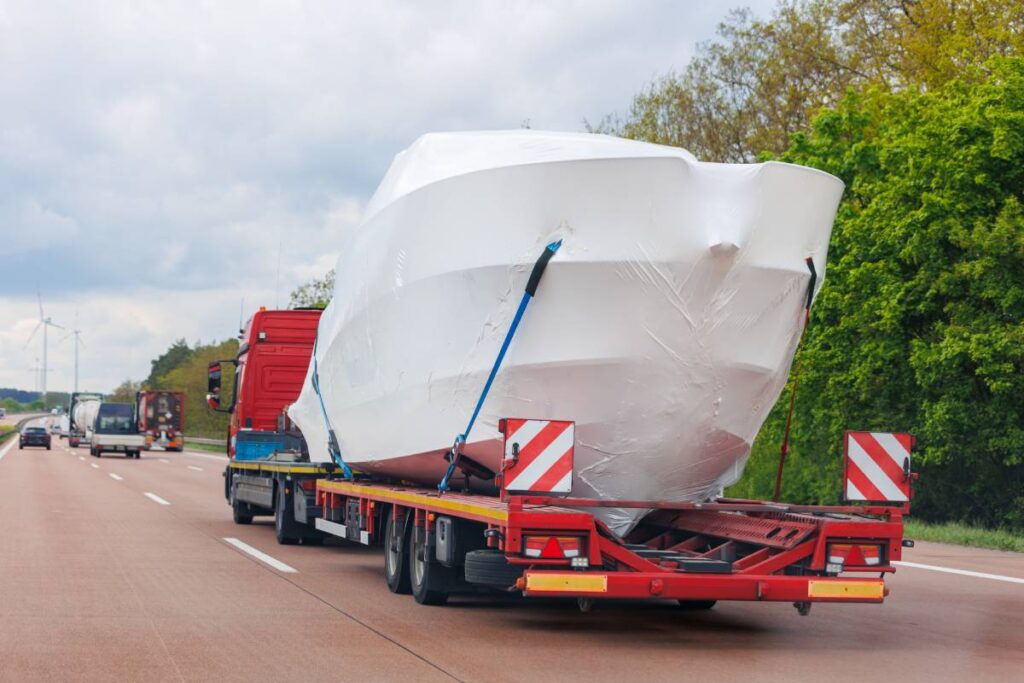
Owning a yacht is a symbol of freedom, luxury, and a deep appreciation for life on the water. However, when it comes time to move your vessel from one state to another—whether you’re relocating, selling, or touring new coastlines—the question inevitably arises: Can you transport your yacht interstate yourself? The answer depends on several factors, including the size of your yacht, licensing requirements, equipment availability, transport logistics, and your willingness to take on potential risks.
Let’s dive into the challenges and considerations involved with interstate yacht transport—and whether it’s something you should tackle yourself or leave to the experts.
Understanding Yacht Transport Basics
Yacht transport refers to moving a boat (typically large and heavy) over land, usually on a trailer pulled by a vehicle. Transporting a yacht interstate is much more complex than towing a small boat to a nearby marina because:
- The vessel may exceed standard road dimensions.
- Legal permits are usually required.
- Escort vehicles or pilot cars might be mandated for safe travel.
- Roads and bridges may pose height or width restrictions.
In most cases, yachts are too big and heavy to be moved by everyday vehicles. This means that special trailers and towing trucks designed for oversized loads are necessary.
Can You Transport Your Yacht Yourself? Legally Speaking
In Australia, transporting large boats or yachts isn’t as simple as hitching up a trailer and hitting the road. Transporting oversized loads—including most yachts—comes with legal obligations.
Key legal considerations include:
1. Towing Licences
To tow a yacht that exceeds standard size or weight, you may require a heavy vehicle driver’s licence—especially if the combined truck and vessel weight exceeds 4.5 tonnes (depending on the state or territory).
2. Boat Size Restrictions
In most Australian states, a vehicle and trailer must not exceed:
- 2.5 metres width
- 19–22 metres total length
- 4.3 metres height
Most yachts exceed these dimensions, making them classified as oversized loads, necessitating oversize load permits.
3. Permit Requirements
Each state has different requirements for transporting oversized vessels. For instance:
- NSW and Victoria require oversize permits for boats over 2.5 metres wide.
- Journey plans must often be submitted.
- Operating only at specified times (e.g., not during peak traffic or nighttime).
- Signage, flags, and flashing lights may be mandated.
- Pilot vehicles might be required for larger loads.
Keeping up with these requirements can be challenging for individuals unfamiliar with logistics or transport compliance.
Do You Have the Right Equipment?
Even if you’re willing to take on the challenge of legal compliance, there’s the practical side of yacht transport.
Transport Vehicles and Trailers
To safely transport a yacht interstate, you’ll need:
- A heavy-duty tow vehicle such as a prime mover or heavy-duty 4WD.
- A purpose-built boat trailer, possibly one rated for oversized vessels.
- Tie-down equipment, supports, and padding to avoid hull damage.
Most private owners simply won’t have the right trailer or vehicle in their garage—because they’re expensive and designed for specific vessel dimensions.
Lifting Equipment
Don’t forget: before transportation, you’ll likely need a crane, hydraulic platform, or boat lift to get the yacht onto the trailer. These services almost always require booking professional operators.
Risks of DIY Yacht Transport
While transporting your yacht yourself may seem appealing at first (you’re in full control and presumably saving money), the risks associated with DIY yacht transport are substantial.
1. Damage to Your Vessel
If your yacht is not secured properly, it may shift or suffer damage during travel due to bumps, poor strapping, or misalignment. Yacht hulls are sturdy in water but highly vulnerable to road vibrations and uneven support.
2. Road Risks
Driving a large load on unfamiliar roads brings added pressure. Clearance under bridges, lane width, and sharp turns can become hazards if you’re inexperienced.
3. Insurance Policies
Standard marine insurance might not cover damage incurred during DIY land transport—especially if carried out without the proper equipment, permits, or professional standards.
4. Time and Stress
Organising permits, planning a route, managing logistics, and dealing with breakdowns can be overwhelming. Let’s not forget the stress of piloting an 18-metre rig over hundreds or thousands of kilometres.
When Does DIY Trailer Transport Make Sense?
Transporting smaller boats interstate by yourself is possible and often safe if:
- Your vessel is small enough to remain within legal towing limits (e.g., under 2.5 metres width).
- You have a vehicle rated for the load.
- You’re confident in handling trailers on highways.
- You have appropriate insurance (boats and trailers).
- You understand road-safety expectations and towing dynamics.
For most yachts, however, these DIY options don’t apply. The term “yacht” usually refers to larger sailing or motor vessels—not fishing tinnies or small powerboats under 1,500kg.
Why Most Yacht Owners Choose Professional Transport Services
Unless you’re a licensed transport operator with experience moving oversized vessels, hiring professionals for interstate yacht transport is the most reliable approach.
1. Experience and Licensing
Professional yacht transporters handle oversized loads every day. They have the correct licences, vehicles, equipment, and know-how to move your vessel safely and legally.
2. Specialised Yacht Trailers and Cradles
Professionals use custom trailers, cradles, and lashing systems specifically designed to support the shape and weight of your hull during transport.
3. Full Insurance and Compliance
Reputable transport firms offer insurance coverage for both loading and transit—giving peace of mind. They also handle permits, route planning, and escort coordination.
4. Time and Cost Efficiency
While hiring a transport company may seem costly upfront, it’s often cheaper and more convenient than attempting to transport it yourself—consider the cost of equipment, fuel, time off work, and the risk of accidental damage.
What to Look for in a Yacht Transport Company
When choosing a professional service, here’s what to keep in mind:
- Experience in interstate boat transport
- Positive customer reviews
- Proper equipment for oversized marine cargo
- In-transit insurance coverage
- Valid transport permits and driver licences
- Transparent quotes and communication
Many companies also offer add-on services such as boat wrapping, pre-transport hull inspections, and storage options.
Conclusion: To DIY or Not to DIY?
Transporting a yacht interstate may sound like an exciting adventure or a way to save money, but the reality is far more complex. Unless you have a small, trailerable boat and the right towing setup, transporting a yacht yourself is likely to be:
- Stressful
- Technically difficult
- Legally challenging
- Potentially risky
Given the high value of most yachts and the logistics involved, hiring a professional is not only safer but often more economical in the long run.
So, while it is technically possible to transport your yacht interstate yourself under certain conditions, for most yacht owners, the wise choice is to leave it to the experts—and enjoy the reassurance that your prized asset arrives safely and securely at its new destination.
Planning to move your yacht across Australia? Rely on expert support and smooth sailing from start to finish. Interstate Boat Towing Au provides insured, professional boat transport services, ensuring safe, hassle-free delivery across Australia with expert handling and cost-effective solutions.
Recent Posts
Recent Comments

Can You Transport Your Yacht Interstate Yourself?

Couch Grass vs. Kikuyu: Effectively Managing Growth in Sydney

What Do Gardeners Do? How to Earn a Decent Income as a Gardener

Aftermarket exhaust vs. OEM: Which one is better for your mining machinery?

What Are Tree Reductions? What Are the Benefits of Tree Reduction?

Can You Transport Your Yacht Interstate Yourself?

How to Get Rid of Ants in Your Lawn: A Complete Guide


